Having a clear content strategy is crucial. It will help you publish higher-quality, more targeted content. A good strategy takes into account SEO as well, so you will rank better too. Use the following seven questions to guide you as you work on your blog content approach.
1. Why Do You Need a Blog?
The first question to ask yourself is, “Why do you need a blog in the first place?” Put differently, what are you trying to achieve with your blog? Is your website lacking visitors? That’s one of the most common reasons businesses feel they need a blog. Publishing blog posts regularly will allow you to attract organic traffic from Google, Yahoo, Bing, and other search engines.
Do you feel like your website is lacking credibility and authority? In that case, writing informative and helpful articles that educate visitors can help you position yourself as an authority and improve your credibility.
Or, do you need to provide updates about events, local happenings, new products or services, discounts, sales, and such? In that case, a blog can prove extremely useful for notifying your visitors about all that.
Are you trying to attract more organic backlinks and local citations? In that case, post comprehensive guides, infographics, original research, case studies, exclusive interviews, or breaking local news.
Your answer might be a combination of the above, along with other reasons.
However, understanding why your business needs a blog will help you shape your content strategy. For example, if you need to boost credibility and authority, you might want to publish case studies, original market research, interviews, and so on. If you want to keep your customers informed, you might want to focus more on news updates.
2. What Aspect of Your Business Will the Blog Improve?
You also need to set clear KPIs (Key Performance Indicators) so you can track the effect your blog has on your business. Here, you want to drill down into specifics and understand which aspects of your business your blog is improving. For example, it might help you collect more leads or email subscribers. You might use your blog to promote your social media profiles, thus increasing your follower count, engagement, and reach. A blog can help you drive more sales, whether you have an ecommerce store, sell digital products, or sell memberships. Generally, you can expect a blog to improve many aspects of your business. Setting KPIs, however, allows you to see how that translates into hard results. For example, you can track landing page visits or CTA clicks, or you can track email signups or leads.
Google Analytics allows you to track conversions, but you can differentiate between regular conversions and qualified conversions. A regular conversion, for example, might be a lead signup, while a qualified conversion might be a lead who has already bought a similar product or has shown enough interest in your service for you to know that a sale is likely. You can also track sales, shares of your products on social media, and any other metric you want to improve.
3. What Do You Expect From Your Audience After Reading Your Blog?
You also need to think about what you want your audience to feel or do after reading your blog. What impression are you trying to make? Are you trying to develop a connection and long-lasting relationship with them? Do you simply want them to respect you more, or do you expect them to perform a specific action?
That action can be:
- Visiting other blog posts on your site
- Sharing your post on social media
- Commenting on the post
- Signing up to your email list
- Downloading your ebook
- Filling out a survey
- Contacting you via your contact form
- Signing up for a free trial
- Signing up for a paid membership
The type of content you publish and the calls-to-action you include will vary based on what you expect and want your readers to do afterward. It’s crucial, however, not just to think about what you expect of your visitors, but also what they expect from you. People are landing on your site because they have a problem — they might need an explanation about a specific issue, or they might be looking for a specific service. Whatever it is, they expect that your blog will help them. Can you fulfill their expectations? If you can, then it will be more likely for them to fulfill your expectations. They will regard you as an authority, be more likely to download your ebook or sign up for your email list, and so on.
4. How Do You Perform Target Market Research?
How are you defining your target audience? If you target the wrong people when conducting keyword research and writing your blog, you won’t get the results you need, and your audience won’t behave as you expect. You can’t just target everyone. Even if a broad audience would be interested in some of your blog posts, that doesn’t mean they will be interested enough to convert into leads, sales, or even engagement. Who is your blog for? What are the demographics of the average reader (age, marital status, income, etc.)? What kind of problems do they face, and what kinds of services are they looking for? What kind of education do they have? You can conduct market research in several ways. If you already have a customer base, the easiest way would be to look at that. If you are just starting, you might look at your competitors and the audiences they are targeting on their blogs. Knowing your audience allows you to customize your content for them.
5. How Do You Come Up With Keywords to Target?
You also need to consider how you are conducting keyword research. What tools are you using, and which factors are you using to determine whether a keyword is worth targeting?Are you using Google’s Keyword Planner? If so, I’d suggest you stop and choose a better tool designed for SEO and not just paid ads.
SEMrush and Ahrefs are good choices, but there are some free tools as well. Are you only looking at a keyword’s popularity and search volume? That’s not the best strategy — you need to check for competition and ranking difficulty, or you’ll end up on the second, third, fourth, or even a later page. That’s no help, even if the keyword gets hundreds of thousands of monthly searches.
Are you looking for long-tail keywords? These keyword phrases may contain more words, but they’re easier to rank for. Are you considering search intent when conducting keyword research? Keywords with buyer intent will lead to more conversions, as opposed to keywords that demonstrate simple curiosity.
6. How Do You Make Sure That the Content Is Top-Notch?
Maintaining quality is crucial. You need to have a quality assurance process before allowing anything to be published. Of course, you need to check for spelling mistakes, grammatical errors, and factual errors. However, maintaining quality is about more than that. Create a checklist to follow before publishing a post. For example, some things you might want to consider including on this quality assurance checklist might be:
- Checking for spelling and grammar with Grammarly
- Using Copyscape to check for instances of plagiarism
- Making sure you have used subheadings and paragraphs to break up your content
- Using Hemingway App to check for ease of reading
- Ensuring you have included great images
- Making sure you have optimized the post for your target keyword or keywords
- Checking if there is a quality call-to-action in the post
- Looking at the competition can help you make sure your content is top-notch. Aim to make your content better than the existing ranking posts.
7. Do You Really Need a Content Calendar?
Finally, ask yourself if you need a content calendar. A content calendar offers many benefits. For example, it can help you keep track of ideas team members came up with along the way and then select the best ones to blog about. It can help you maintain consistency across all your blog posts and keep posting on schedule.
A content calendar is great for teamwork, too. It allows different members to collaborate on upcoming blog posts. For example, those conducting research can get their results on time to the writing staff, who can then make sure the editing staff gets the draft in time for publishing.
At the same time, you don’t want a content calendar to restrict you. Sometimes, it’s good to be spontaneous and blog about something that isn’t on the calendar. New events can make a certain topic more relevant, for example, or you might come up with a new idea that you want to write about before your competitors.
Final Thoughts
Take your time when creating a content strategy. It should be a living document — don’t be afraid to update it regularly as needed. Above all, make sure to track your KPIs and see whether your blog is bringing you the results you expected. If it is not, consider optimizing your strategy and testing out new tactics, topics, or ideas. Also, your blog content strategy should complement your social media and email marketing campaigns, not take away from them.




